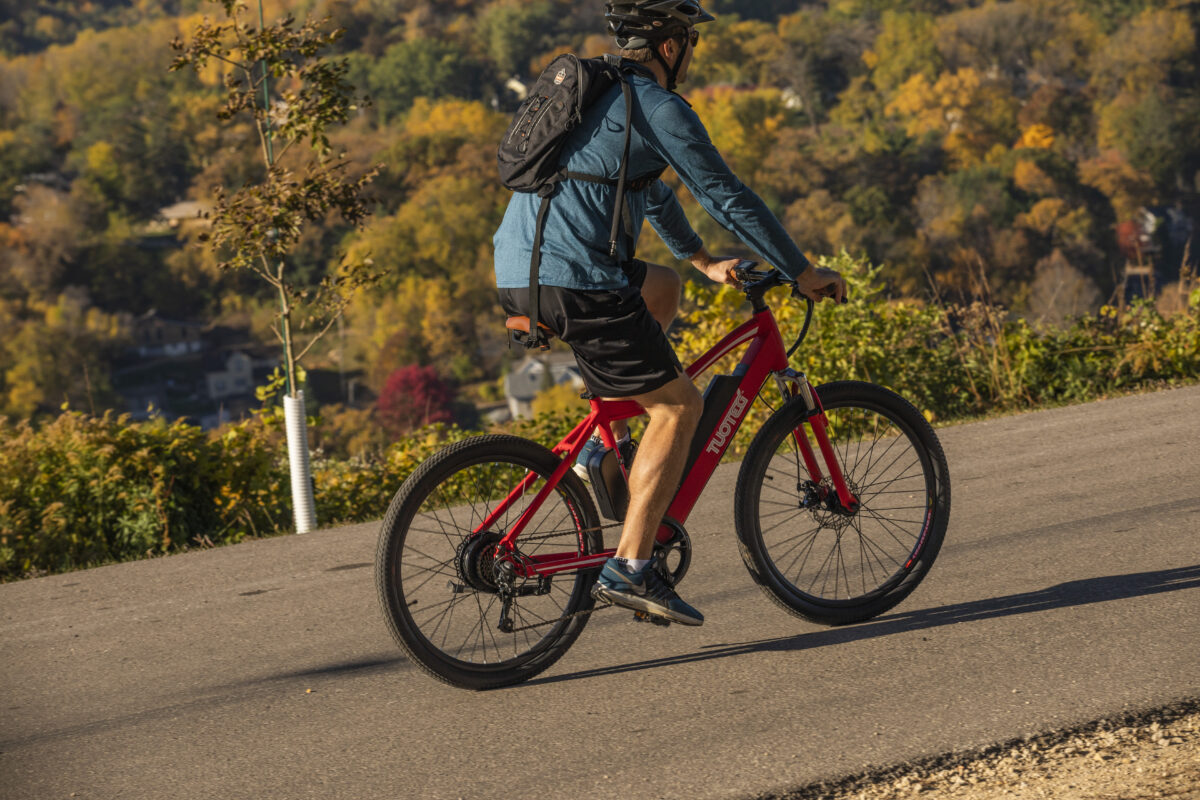Informational, Preparation, Seasonal
Winter Riding 101 – Tips On Riding Your eBike in the Cold
Riding Your eBike in the Cold – How to Prepare and Care
If this time of year typically brings about snow and negative temperatures for you like it does for us, we’ve got a few tips and tricks on how to keep your electric bike safe from the weather and performing at top notch all year round.
How to Protect Your Lithium Battery
Properly taking care of your lithium battery is one of the most important aspects about owning an eBike. The battery is typically the part of the electric bike that needs the most care. If the temperature gets below 32° Fahrenheit, you should take the lithium battery off your bike and store it indoors. Not only should you store your lithium battery at room temperature, but you should charge it at room temperature too. The way that lithium batteries work is that they rely on chemical reactions to charge up, and if it gets too cold, the chemical reactions can slow down or stop from occurring altogether. Lithium batteries are known for handling the cold better than any other type of battery. However, if it gets too cold, it can still affect their ability to store energy. It is also important to regularly charge your electric bike’s battery in the winter months. This is due to the fac that the cold makes the battery lose its charge a little faster than normal. If you plan to not use your eBike in the winter and wish to store your battery away, you should have it charged at about 50%. This will ensure that you avoid completely depleting the battery’s power.
How to Store your eBike in the Winter
You can store and eBike inside or outside during winter months. However, if you choose to store your electric bike outside, it must be in a location where it won’t be exposed to the elements such as snow and rain. Storing your eBike in a garage or basement is ideal if you don’t plan on riding it during the winter. As stated above, make sure to remove your battery from the eBike and store it inside in room temperature.
Riding Your eBike in Snow
Some types of electric bikes such as fat tire eBikes give you the ability to ride over harsher surfaces such as snow, sand, mud, and more. If you plan to take your eBike out in the snow, make sure you start off riding it as a normal bike to make sure your tires get traction. If your tires have no traction, the electric assist will just spin and slide instead of gripping to move you forward. Make sure you feel confident when riding in the snow, as bike paths are easier to cover and harder to see where you are going.
What to Wear When Riding Your eBike in the Cold
Since winter months means it is darker outside for longer, it’s crucial to wear clothing that is bright and reflective. Thin hats that fit under your helmet will help to keep your head and ears warm. Gloves with good insulation and wind-protection—that also allow you to manipulate the bike controls—are a worthwhile purchase. Handlebar pogies are an ideal option for extreme conditions. Any time you’re exercising outside, wearing layers is important for temperature and moisture regulation. Dress too warmly and your perspiration will lead to a cold and shivery ride. On the other hand, not enough coverage could lead to frostbite. Be ready to monitor and adjust on the fly.



